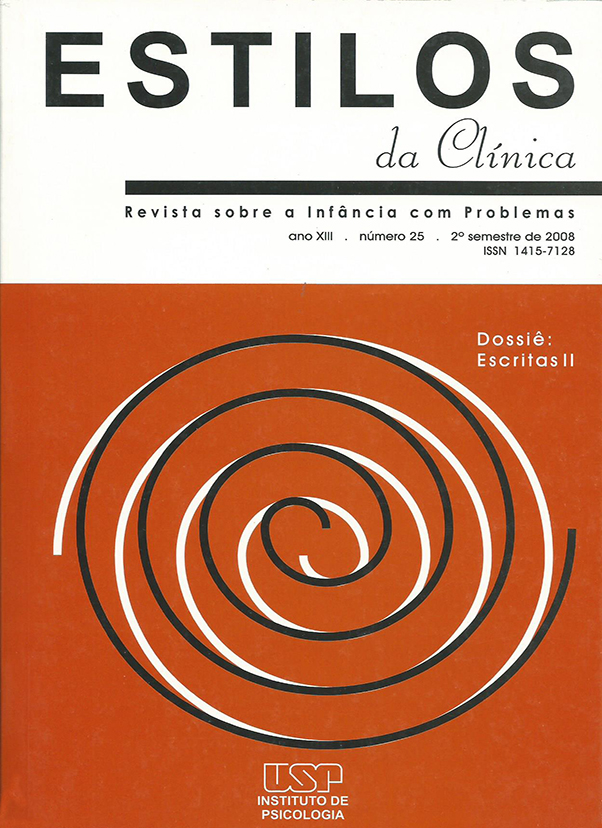The psychoanalyst's position: impasses and alternatives
DOI:
https://doi.org/10.11606/issn.1981-1624.v13i25p210-231Keywords:
psychoanalyst's position, psychoanalytic technique, psychoanalyst's desireAbstract
Without being reduced to a technique but not excluding it, the analyst's work is based upon his unconscious and his position towards the patients' conflicts doesn't involve the lack of desire. Aiming at investigating the clinical psychologist's discourses about their own work and considering the Freudian and Lacanian theories about the analyst's desire and position, three case studies were done with three clinical psychologists that work within a psychoanalytical framework. The results show the possibility of admitting conflicts with the patients and problems to define their own work. It seems that the analyst should be disconnected from theoretical ideals.Downloads
Downloads
Published
Issue
Section
License
O envio dos manuscritos deverá ser acompanhado de Carta à Comissão Executiva solicitando a publicação. Na carta, o(s) autor(es) deve(m) informar eventuais conflitos de interesse - profissionais, financeiros e benefícios diretos ou indiretos - que possam vir a influenciar os resultados da pesquisa. Devem, ainda, revelar as fontes de financiamento envolvidas no trabalho, bem como garantir a privacidade e o anonimato das pessoas envolvidas. Portanto, o(s) autor(es) deve(m) informar os procedimentos da aprovação da pesquisa pelo Comitê de Ética da instituição do(s) pesquisador(es) com o número do parecer.
O material deve ser acompanhado também de uma Declaração de Direito Autoral assinada por todo(s) o(s) autor(es) atestando o ineditismo do trabalho, conforme o seguinte modelo:
Eu, Rinaldo Voltolini, concedo à revista o direito de primeira publicação e declaro que o artigo intitulado Sobre uma política de acolhimento de professores em situação de inclusão, apresentado para publicação na revista Estilos da Clínica, não foi publicado ou apresentado para avaliação e publicação em nenhuma outra revista ou livro, sendo, portanto, original.


